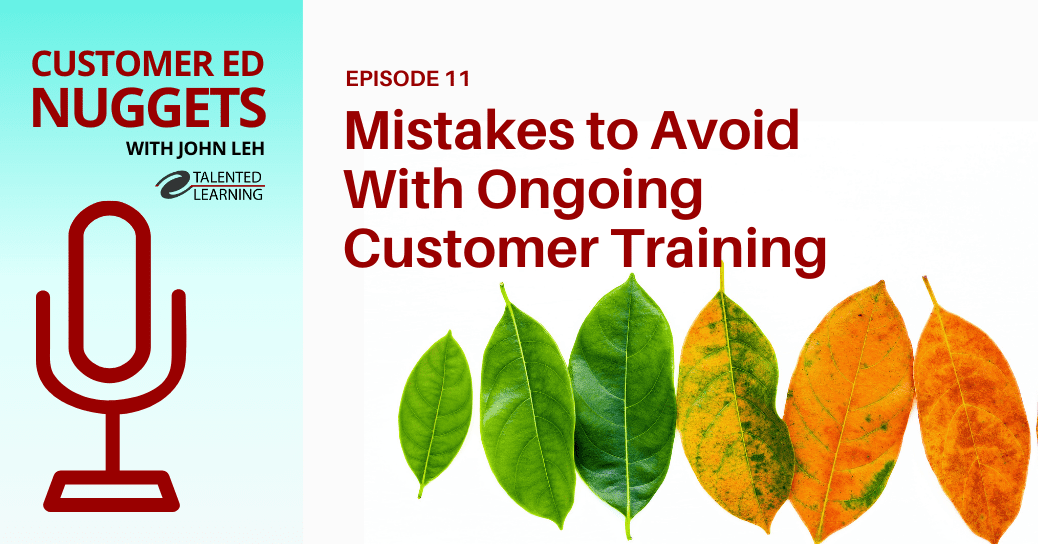
Are you responsible for marketing educational content to customers, channel partners, or other audiences that operate outside of your organization? If so, how easy is it for you to connect with these audiences and convince them to engage in training?
If you think this process is challenging, you’re not alone. A few months ago, we asked nearly 100 learning professionals to finish the question: “Attracting new or returning external learners to buy or consume content is…”
 43% told us that above all, attraction marketing for extended enterprise learning is difficult. Another 33% said it’s time-consuming, while 8% said it’s expensive. Surprised? I’m not. As an analyst and consultant who focuses exclusively on extended enterprise learning, I hear these concerns all the time.
43% told us that above all, attraction marketing for extended enterprise learning is difficult. Another 33% said it’s time-consuming, while 8% said it’s expensive. Surprised? I’m not. As an analyst and consultant who focuses exclusively on extended enterprise learning, I hear these concerns all the time.
But here’s what really caught my eye – 8% of respondents actually find it EASY to attract and engage new and existing learners to their content! That’s encouraging news.
I hope to follow up with these people, find out more about their “secret sauce” and then share their tips with you. Meanwhile, I’d like to share suggestions from another professional who is doing an excellent job of putting attraction marketing to work for his company’s extended enterprise learning programs.
Kevin Hanegan is Chief Learning Officer at Qlik, a visual analytics software company, where he’s responsible not only for employee training but also for channel and customer education.
Kevin’s credentials are impressive. He’s a professor at the University of California in Irvine, where he teaches web design and development courses. In addition, he has written multiple books about programming languages, so he brings technology depth as well as expertise in user experience and instructional design.
Do you want more information and analysis on the top 40 learning systems in the world? Buy our 2023 Corporate Learning Systems Market Update report – now available through the 2nd half of this year at a 50% discount!
Here are several useful ideas inspired by my discussions with Kevin:
Attraction Marketing Tips For Extended Enterprise Learning
1) Map Content to the Learning Journey
External learning audiences move through a process similar to the “customer buying journey” popularized by marketing professionals. Here’s the basic concept:
THE LEARNING JOURNEY
Awareness > Assessment > Application > Adoption > Advocacy
Mapping learning experiences to this multi-step process is a smart approach. But contrary to what many technology companies may think, the best time to introduce feature/function training is not at the start, but in the “application” stage.
For example, imagine your company just purchased a software tool that you’re expected to use.
Kevin says, “It wouldn’t make sense to toss you into an intensive two-day training class immediately. You wouldn’t have enough context to make that training worthwhile.”
“New users don’t need training. They need awareness. They need to understand what a product can do for them and how it adds value.”
Once you’re aware of how a new tool can help you, you should be ready to give it a test drive. After that, you’ll be ready to apply the product to a specific need.
If all goes well, you’ll gain mastery and adopt it more fully. Eventually, you may even champion this tool to others, and drive adoption in your broader professional circles.
Bottom line, this is an indoctrination process, and thoughtfully designed educational content can help customers succeed, every step of the way.
2) Choose Marketing Tactics Strategically
Free trials. Freemiums. Discounts. Coupons. Bundles. Bulk sales. The list goes on. As I’ve discussed previously, there are endless ways to gain visibility, attract attention and drive interest in training content.
But with a smorgasbord of marketing options that can quickly exhaust even the heftiest budgets, what’s the smartest way to invest your dollars?
Again, if you rely on your audience’s learning journey as a guide, your marketing priorities will become much clearer. Why does that matter so much?
Well, it’s one thing to pull learners to your content for their first learning experience. But you have only one chance to make a good first impression. If that impression is weak, learners won’t engage, they won’t return, and they certainly won’t tell anyone else how great it is.
So it pays to think carefully before you put promotional energy in front of your content. Precisely what knowledge and information will your prospects expect to have at their fingertips? Do they want a quick answer to a very specific question? Would they benefit from access to a collection of related resources they can explore over time? Or would other types of content be more effective?
Defining the “what, when, where, how, and why” of key user scenarios will inform the learning experiences you develop. Then you can craft appropriate communications to drive the right audience to the right content at the right time. After that successful experience, you can have confidence they’ll respond when you invite them back for more.
Do you want more information and analysis on the top 40 learning systems in the world? Buy our 2023 Corporate Learning Systems Market Update report – now available through the 2nd half of this year at a 50% discount!
3) Empower Multiple Voices to Spread the Word
As Kevin says, “With demand generation, content may be king, but context is equally important.” And in extended enterprise learning, there are often many voices to leverage.
Your corporate education group doesn’t have to carry the entire load. Your sales team, your channel partners, and your corporate marketing team are resources that can extend your marketing outreach.
In addition, consider empowering existing customers. If your training is effective, you can encourage those learners to tell their professional connections about it through social media and other communication channels they use.
4) Win Ambassadors By Demonstrating Value
If you want to convince your sales team and channel partners to sell training on your behalf, you have to provide a compelling value proposition. So, as you develop your marketing agenda think carefully about the metrics that matter and be sure track them over time.
In Qlik’s case, they did a comparative analysis of customers who bought training along with their product, versus those who did not.
They discovered that customers who bought training as part of the initial sale actually made their next purchase four times faster than customers who didn’t buy training. Plus, among customers who had purchased training, subsequent sales were seven times larger.
As Kevin explained, “These results make sense. Education helps drive user adoption. Customers have less shelfware and they buy more licenses, so deals are quicker and larger, overall. With meaningful metrics that explained ‘what’s in it for me,’ it was easy to get our partners and sales teams onboard.”
Conclusion
When I studied instructional design several decades ago, marketing wasn’t part of the curriculum. Experience taught me that we shouldn’t expect to pick up marketing know-how by accident. But with intentional effort, we can use marketing tools to make learning more visible, relevant and rewarding for those we serve.
So if you think it’s difficult to reach external audiences and you’re not sure what to do next, why not follow the path of successful extended enterprise learning programs?
Take a step back to verify the specific needs and behaviors of your target audiences. Look for ways to leverage your content, technology, and communications channels. Then test and iterate, based on meaningful metrics.
It may not be easy, but I guarantee, you’ll see progress.
Thanks for reading!
Need Help Buying the Best LMS?
Take the next step toward a learning system that fits your business needs. Submit the form below for a free preliminary discussion with our lead analyst, John Leh.
Share This Post
Related Posts
The Future of Customer Education: Customer Ed Nugget 16
Customer education is rapidly evolving as organizations embrace new strategies and tech. What does this mean for the future of customer education? See what experts say on this Customer Ed Nuggets episode
Education Strategy Mistakes to Avoid: Customer Ed Nugget 15
What does it take to deliver a successful customer education program? It starts with a solid education strategy. Learn how to avoid common pitfalls on this Customer Ed Nuggets episode
Which LMS is Best for You? New Shortlisting Tool for 2024
How can you find the best learning system for your business? Our LMS shortlisting tool can help. Learn about the 2024 RightFit Solution Grid. Free, reliable guidance based on our independent research
How to Build a Learning-Based Business: Executive Q&A Notes
Building and selling online courses may seem easy, but building a profitable learning-based business is far more complex. Find out what successful leaders say about running this kind of business
The Rewards of Community Building: Customer Ed Nugget 14
What role does community play in your customer relationships? Find out why community building is such a powerful force in customer education on this Customer Ed Nuggets episode
Benefits of Training Content Syndication: Customer Ed Nugget 13
If you educate customers online, why should you consider content syndication? Discover 10 compelling business benefits in this Customer Ed Nuggets episode
Top Marketing Skills to Master: Customer Ed Nugget 12
Successful customer education programs depend on professionals with expertise in multiple disciplines. Which marketing skills lead to the best results?
How to Measure and Improve Partner Training ROI
An educated channel is a successful channel. But how do you know if your educational programs are effective? Learn from an expert how to evaluate partner training ROI
Mistakes in Ongoing Customer Training: Customer Ed Nugget 11
Customer education doesn't stop with onboarding. It pays to invest in ongoing customer training. Learn which mistakes to avoid in this Customer Ed Nuggets episode














FOLLOW US ON SOCIAL